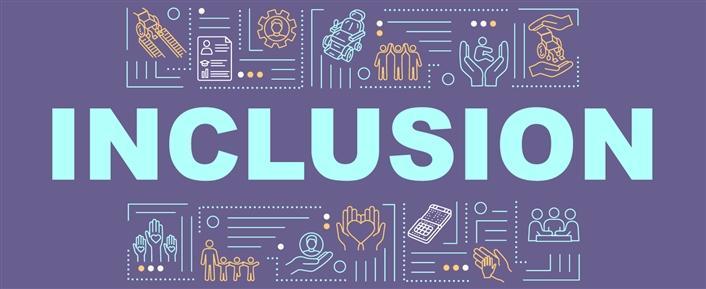Balancing Fun and Learning: Proven Strategies Every Educator Needs to Engage Students
In today’s rapidly evolving educational landscape, keeping students engaged remains both a challenge and a necessity. Striking the right balance between fun and learning is essential to promote retention, curiosity, and deep understanding. But how can educators effectively combine enjoyment with meaningful educational outcomes? In this article, we explore proven strategies every educator can use to engage students effectively while ensuring that learning objectives are met.
Why Balancing Fun and Learning Matters
Achieving a harmonious blend of enjoyment and academic rigor is not just a modern trend; it’s rooted in psychology and educational research. When students find lessons enjoyable, their motivation increases, cognitive load lightens, and facts retention improves. Integrating engaging teaching strategies also caters to diverse learning styles and fosters an inclusive classroom surroundings.
key Benefits of Making Learning enjoyable
- Increased Engagement: fun activities pique student interest and maintain focus throughout the lesson.
- Enhanced Retention: Associating lessons with positive emotions supports long-term memory formation.
- Improved Collaboration: Interactive methods promote teamwork, communication, and social skills.
- Positive Classroom Culture: An upbeat, supportive atmosphere motivates students to participate actively.
- Reduced Anxiety: Enjoyable tasks reduce fear of failure,making students more willing to take intellectual risks.
Proven Strategies for Balancing fun and Learning
The secret to engaging students lies in thoughtful planning and execution. Here are actionable, research-supported strategies to help educators integrate more fun into daily learning while achieving academic goals:
1. Gamify the Learning Experience
Gamification involves incorporating game elements into lessons, which can drive motivation and participation. popular ideas include:
- Learning Quests: Organize curriculum content into missions or quests with rewards for completion.
- Point Systems: Assign points for participation,collaboration,or completing challenges.
- Classwide Leaderboards: track progress and achievements to encourage healthy competition.
- Digital Learning Games: Tools such as Kahoot! and Quizizz engage students while reinforcing knowledge.
2. Foster Hands-On, Experiential Learning
Activities that involve students directly in the learning process—often called active learning—have a powerful impact. try:
- science Experiments: Let students investigate real-world phenomena.
- Project-Based Learning: Assign meaningful, long-term projects that allow creative expression and critical thinking.
- Role-Playing and Simulations: Bring past events, literary stories, or scientific discoveries to life.
3. Integrate Arts and Creativity
Infusing artistic expression into lessons can make content memorable and enjoyable. Consider:
- Music and Movement: Use songs or dance to support language development or reinforce facts.
- Drawing and Visual Arts: Allow students to illustrate concepts, timelines, or processes.
- Storytelling: Let students create stories or act out scenarios to deepen comprehension.
4. Leverage Technology Mindfully
When used purposefully, educational technology offers innovative avenues for engagement:
- Interactive Apps: Explore platforms offering interactive simulations, AR experiences, or coding activities.
- Virtual Field Trips: Transport students to far-off locations or inside the human body with VR and 360-degree video.
- Collaborative Documents: Promote teamwork using Google Docs, Padlet, or other real-time collaboration tools.
5. Co-Create the Learning Process
Empowering students by including them in lesson planning leads to greater buy-in and excitement.Ways to co-create:
- Brainstorming Sessions: Invite students to suggest topics or vote on activities.
- Genius Hour: Dedicate time each week for student-led inquiry or passion projects.
- Choice Boards: Offer options for how students demonstrate their learning.
practical Tips for Educators
- Diversify Instruction: Alternate between interactive, visual, auditory, and kinesthetic learning activities.
- Model Enthusiasm: Your energy and curiosity are contagious—show excitement for the material!
- Set Clear Learning Goals: Make sure fun activities directly relate to curriculum objectives.
- Gather Feedback: Regularly ask students which methods they enjoy and what helps them learn best.
- Celebrate Success: Recognize both effort and achievement, building a sense of progress and accomplishment.
Case Study: Engaging Students with Interactive History Lessons
To highlight the power of balancing fun and learning, let’s examine a real classroom example. Ms. Thompson, a middle school history teacher, was struggling to keep her students interested in learning about the American Revolution. Instead of relying on standard lectures,she used a variety of techniques:
- Role-play: Students were assigned historical roles and reenacted key debates and events,promoting empathy and deeper understanding.
- Interactive Timelines: Groups built creative timelines using art supplies and digital tools, reinforcing chronological thinking.
- Gamified Quizzes: After each lesson, ms. Thompson held a quiz competition using kahoot!, motivating students with friendly competition.
As an inevitable result, student participation soared, test scores improved, and feedback indicated that students both enjoyed the class and retained more information.
Firsthand Experience: teachers Share Their Favourite Engagement Techniques
“I like incorporating escape room activities where students solve puzzles related to our lesson. Not only are they learning, but they’re working together and having fun!”
— Mr. Lee, High School Math Teacher
“Letting kids create comics or short films about what we’re studying really boosts engagement and helps them remember even complex topics.”
— Ms. Vasquez, Elementary School Teacher
Conclusion: The Path to lasting Engagement
Balancing fun and learning isn’t about sacrificing rigor—it’s about weaving enjoyment into lesson plans so that students develop a genuine love for revelation. By adopting the proven strategies outlined above, educators can create dynamic, inclusive, and memorable learning experiences that inspire success. Remember, a playful atmosphere paired with thoughtful pedagogy is the key to unlocking every student’s potential.
looking for more inspiration? Explore our other articles on innovative teaching strategies and student engagement techniques to keep your classroom energized and effective!

